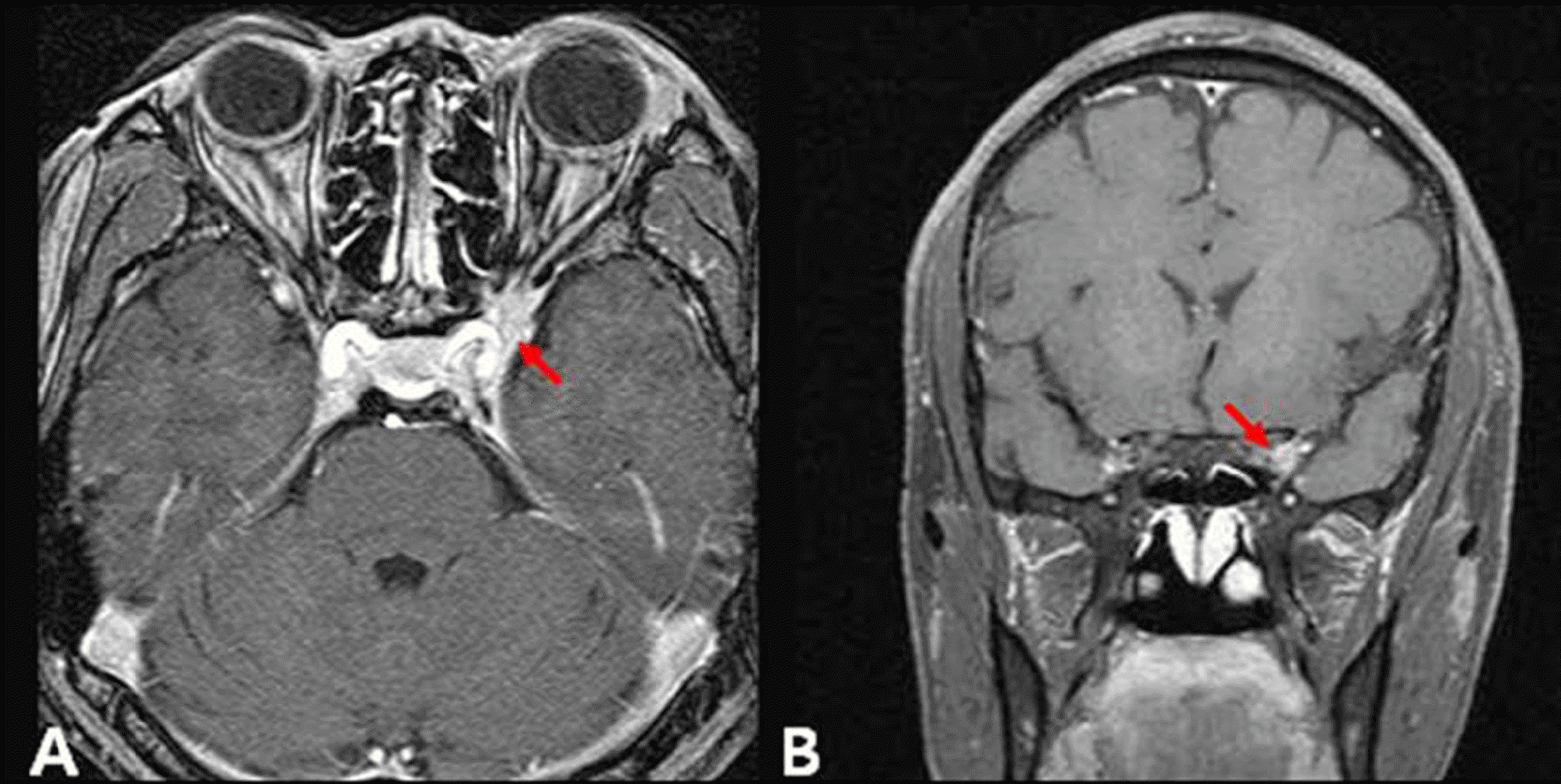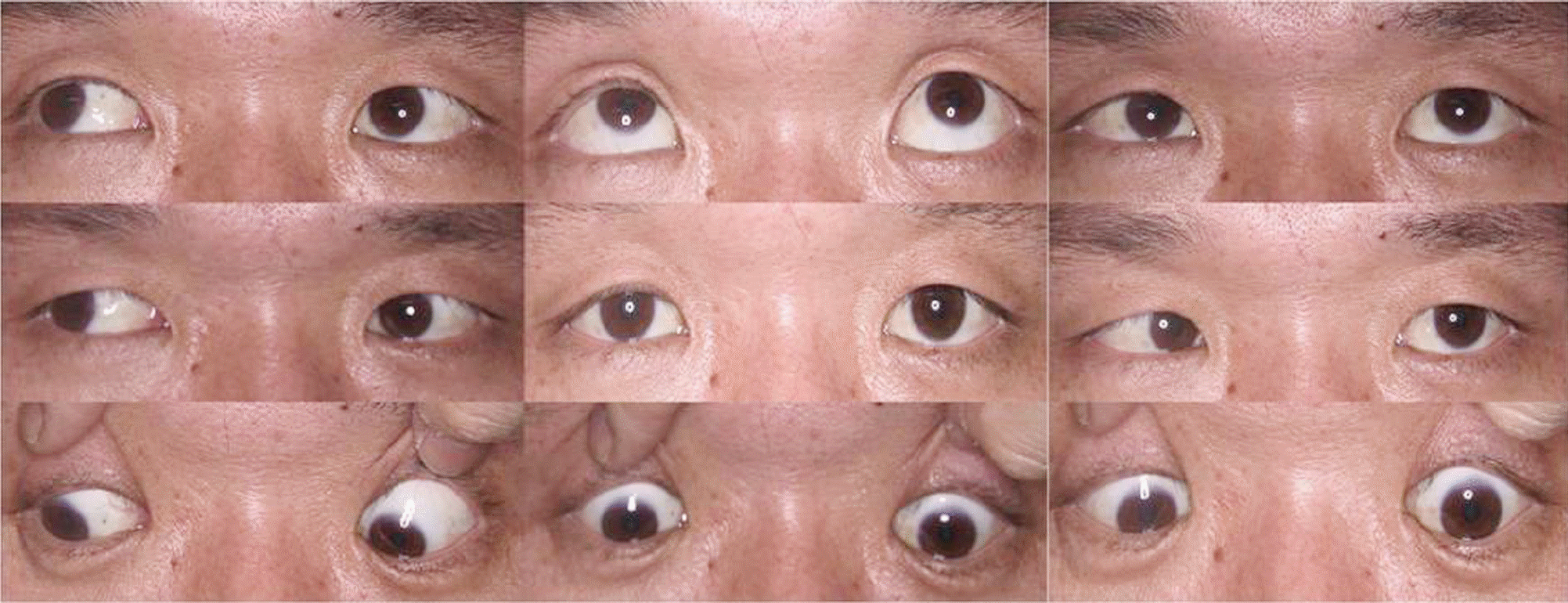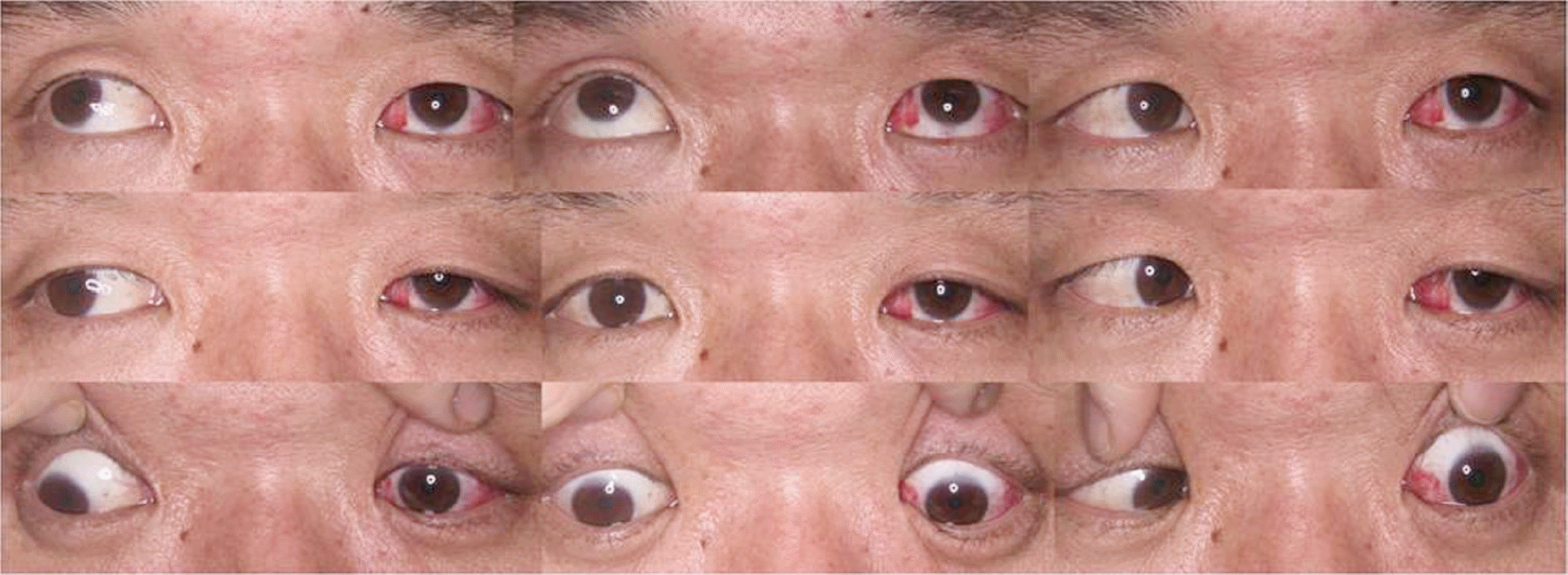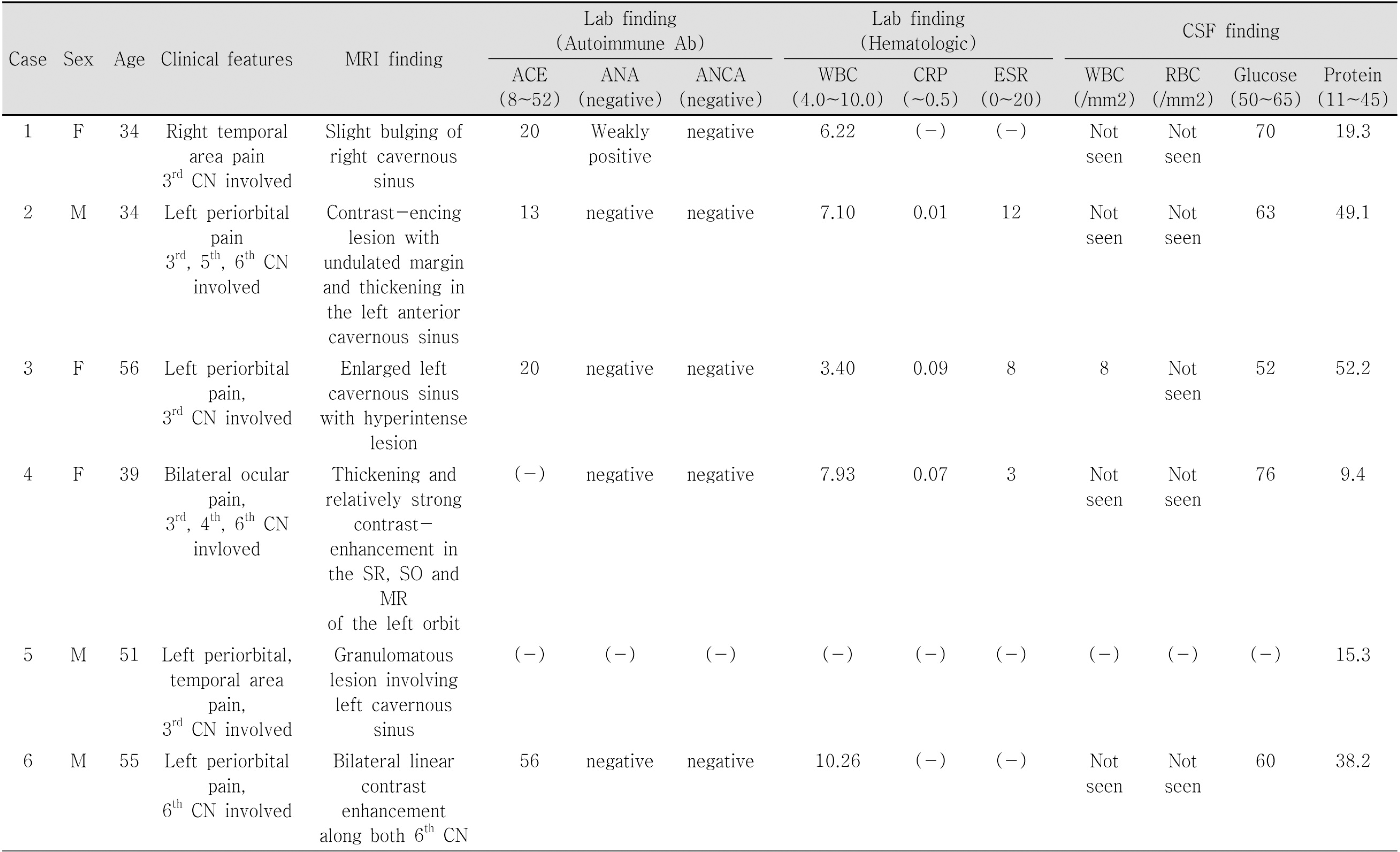Abstract
Purpose
The authors reviewed clinical features, response to treatment and recurrence rate of Tolosa-Hunt syndrome.
Methods
A retrospective chart review was performed on 6 patients, who fulfilled the diagnosis for Tolosa-Hunt syndrome according to the International Headache Society (IHS) classification of 2004.
Results
Every patient had orbital pain as a first symptom, followed by cranial nerve paresis. The third cranial nerve was most commonly involved (83.3%), followed by the sixth nerve (50%), the forth nerve (16.7%), and the first branch of the fifth cranial nerve (16.7%). Two of the patients showed multiple cranial nerve paresis (33.3%, 2 out of 6). All patients received high-dose steroid therapy for more than 5 days, and all patients had resolution of orbital pain within 72 hours of treatment. Full recovery of cranial nerve paresis occurred on average in 2.3 months (3 days to 12 months). During the 29 months of follow-up, 2 patients (33.3%) had a recurrence episode.
Conclusions
Tolosa-Hunt syndrome responds well to steroid therapy, and full recovery is possible with proper treatment. The exact diagnosis and treatment of Tolosa-Hunt syndrome is important. Because Tolosa-Hunt syndrome often recurs after full recovery, the authors suggest a minimum follow-up period of 2 years.
Go to : 
References
1. Goto Y, Goto I, Hosokawa S. Neurological and radiological studies in painful ophthalmoplegia: Tolosa-Hunt syndrome and orbital pseu-dotumour. J Neurol. 1989; 236:448–51.

2. La Mantia L, Curone M, Rapoport AM, Bussone G. Tolosa-Hunt syndrome: critical literature review based on IHS 2004 criteria. Ce-phalalgia. 2006; 26:772–81.
3. Classification and diagnostic criteria for headache disorders, cranial neuralgias and facial pain. Headache Classification Committee of the International Headache Society. Cephalalgia. 1988; 8:1–96.
4. Tolosa E. Periarteritic lesions of the carotid siphon with the clinical features of a carotid infraclinoidal aneurysm. J Neurol Neurosurg Psychiatry. 1954; 17:300–2.

5. Smith JL, Taxdal DS. Painful ophthalmoplegia. The Tolosa-Hunt syndrome. Am J Ophthalmol. 1966; 61:1466–72.
6. Attout H, Rahmeh F, Ziegler F. Cavernous sinus lymphoma mi-micking Tolosa-Hunt syndrome. Rev Med Interne. 2000; 21:795–8.
7. Leijzer CT, Prevo RL, Hageman G. Meningioma presenting as Tolosa-Hunt syndrome. Clin Neurol Neurosurg. 1999; 101:19–22.

8. Hannerz J. Recurrent Tolosa-Hunt syndrome: a report of ten new cases. Cephalalgia. 1999; 19:33–5.

9. Headache Classification Subcommittee of the International Headache Society. The International Classification of Headache Disorders: 2nd edition. Cephalalgia. 2004; 24:9–160.
10. Gladstone JP, Dodick DW. Painful ophthalmoplegia: overview with a focus on Tolosa-Hunt syndrome. Curr Pain Headache Rep. 2004; 8:321–9.

11. Biousse V, Newman NJ. Aneurysms and subarachnoid hemorrhage. Neurosurg Clin N Am. 1999; 10:631–51.

12. Kasner SE, Liu GT, Galetta SL. Neuro-ophthalmologic aspects of aneurysms. Neuroimaging Clin N Am. 1997; 7:679–92.
13. Holland D, Maune S, Kovacs G, Behrendt S. Metastatic tumors of the orbit: a retrospective study. Orbit. 2003; 22:15–24.
15. Wroe SJ, Thompson AJ, McDonald WI. Painful intraorbital me-ningiomas. J Neurol Neurosurg Psychiatry. 1991; 54:1009–10.

16. Jacobs D, Galetta S. Diagnosis and management of orbital pseudo-tumor. Curr Opin Ophthalmol. 2002; 13:347–51.

17. Wasmeier C, Pfadenhauer K, Rosler A. Idiopathic inflammatory pseudotumor of the orbit and Tolosa-Hunt syndrome-are they the same disease? J Neurol. 2002; 249:1237–41.
19. Hunt WE, Meagher JN, Lefever HE, Zeman W. Painful opthal-moplegia. Its relation to indolent inflammation of the carvernous sinus. Neurology. 1961; 11:56–62.
Go to : 
 | Figure 2.T1-weighted MRI shows a contrast-enhancing lesion with undulated margin and thickening in the left anterior cavernous sinus and superior orbital fissure area (red arrow). |
 | Figure 3.Two weeks after steroid pulse therapy of case 2. Periocular pain and ptosis in the left eye disappeared, and left ophthalmoplegia showed much improvement. |
Table 1.
Diagnostic criteria for Tolosa-Hunt syndrome (IHS classification of 2004)
| A. One or more episodes of unilateral orbital pain persisting for weeks if untreated |
| B. Paresis of one or more of the third, fourth and/or sixth cranial nerves and/or demonstration of granuloma by MRI or biopsy |
| C. Paresis coincides with the onset of pain or follows it within 2 weeks |
| D. Pain and paresis resolve within 72 h when treated adequately with corticosteroids |
| E. Other causes have been excluded by appropriate investigations* |




 PDF
PDF ePub
ePub Citation
Citation Print
Print




 XML Download
XML Download